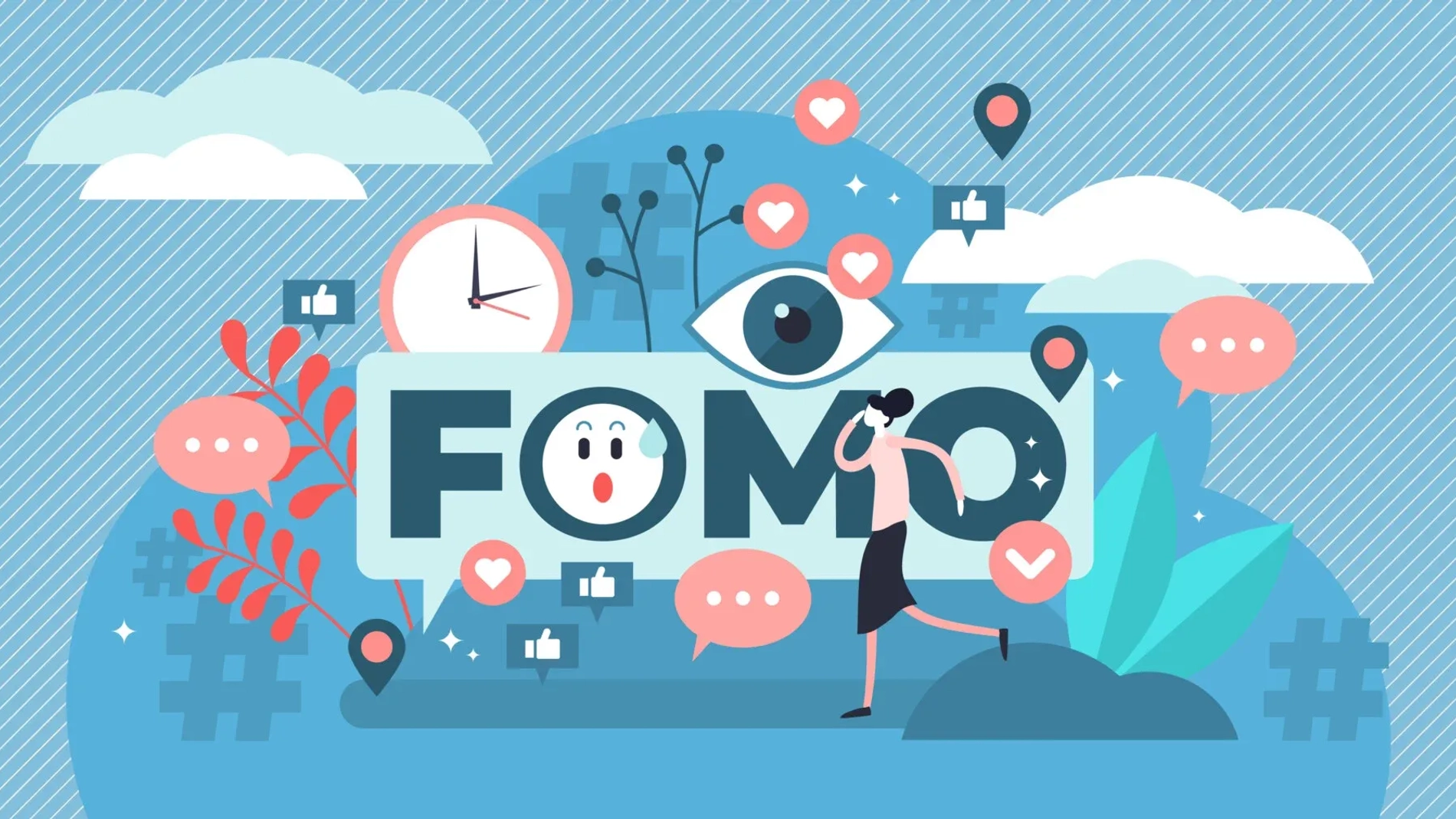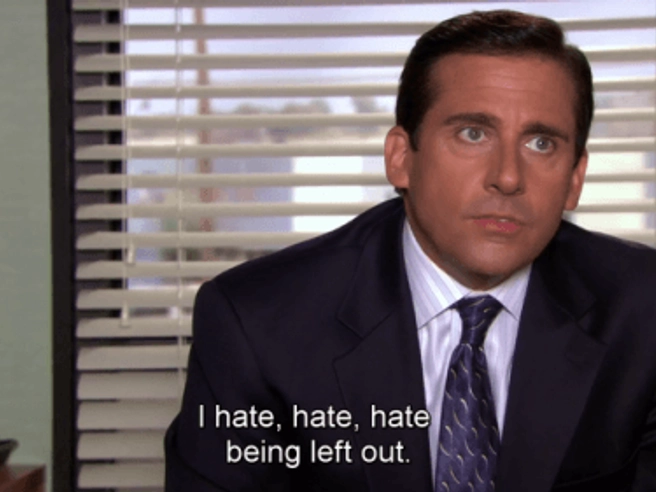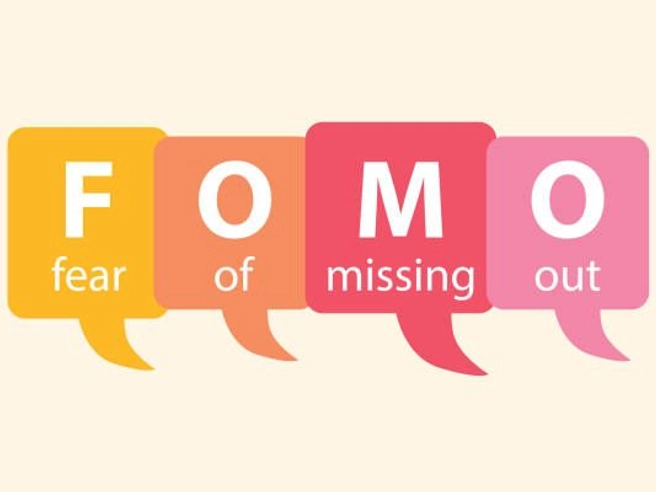
Don’t Miss Out on Using FOMO in Your Marketing

As adults, we are totally immune to peer pressure now. Gone are the days we’d feel compelled to do something purely because everyone else was doing it. This often led to the inevitable scolding “If everyone jumped off a bridge, would you do that too?!” The answer was probably yes.
And, if we’re honest with ourselves, this behaviour hasn’t really disappeared at all has it?
We all know a friend that still seems to attend every activity, whether it’s a night out, a cinema trip, or watching paint dry. Whatever is going on, they are there. This is due to an absolute dread of missing out on something exciting that will be discussed in the future.
This is a totally natural sentiment, we’ve all experienced the envy and loneliness of not being involved in something amazing. The perceived isolation and self-chastisement that ‘if only you’d gone for that pint, you wouldn’t have missed the greatest night out of all time’. Not being involved in whatever ‘it’ is can be a powerful motivating factor that influences our behaviour, and with a bit of tact, it can be incorporated into your social media strategy.
The fear of missing out (FOMO) is a genuine condition linked to anxiety. Obviously, we’re not proposing that your digital strategy should be to target these people or create social trauma is your audience. With that said, creating a sense of urgency for your target audience can be an incredibly powerful motivating factor. 60% of Millennials make FOMO purchases. Here are some ways you can incorporate FOMO into your digital strategy.

Limited supply or time coupon
It goes without saying that in order to create a FOMO-based marketing campaign, there has to be something for people to miss out on (We’re sharp cookies at h2o). This means you need a limited offer with an expiry date, or a restricted number of products to create a sense of urgency and inspire the impulsive purchases that are the aim of the game.
Majestic Wines are a classic example of this with their ‘When It’s Gone, It’s Gone’ (WIGIG) range of wines. This helps to provoke a classic sense of FOMO as the temporary and limited nature of these wines is emphasised. You could be about to miss out on your new favourite wine, unless you buy EVERYTHING, NOW!
If you do unfortunately have a healthy supply of the product that you’re trying to create FOMO about, you can always place a time limit on your offer to create the sense of urgency and almost panic amongst your target audience. You only need to look at Black Friday hysteria to see the impact that a time-sensitive offer can create.
‘Transparency’
Typically a business aims to promote the idea that they have limitless stock and can handle any situation. Using transparency to communicate, just how few remaining products are left can create a sense of panic.
Hotel booking sites like Booking.com and Trivago are very adept at using this tactic. If you see that there are only 2 rooms left at the hotel you’re viewing, you may be inclined to book it quickly before some other so-and-so sneaks in and steals your room. There has been some controversy recently about how genuine the lack of availability truly is.
A variant of the transparency tactic is to show how many views a certain product/room/house has received in the past. The aim here is to demonstrate that the featured product is in high demand, and could be snapped up at any time unless you move quickly. This turns browsing and shopping into a competitive activity, where you’re working against an anonymous army of enemies desperately trying to stop you achieving your goal of securing a weekend away or finding your dream home.
Transparency will only work if the item is high value and obviously limited. If 20,000 have viewed the same pair of socks on the H&M website, I don’t think I’d lose too much sleep over it. If 20,000 people have viewed the flat I want to rent, that’s a different matter. Make sure that there is sufficient FOMO potential for your product before you incorporate it into your marketing strategy.

You can’t have this now.
A slightly more sophisticated FOMO technique is to offer delayed gratification. Essentially what a brand will do is show an unavailable option included among the available options. The implication is that the unavailable options are more popular, and therefore perhaps better. It’s human nature to be annoyed if you can’t have something that other people have got. Good examples of this tactic are hotel booking services. The unavailable option may suggest that you change your availability in order to stay at the sold-out venue.
Just make sure that you don’t get caught out and show something that is unavailable in one search, as available in another!
Cool people are decisive
Finally, there is the tactic of offering a limited offer that rewards early adopters or promises something exclusive. Everybody likes to get something exclusive that other people can’t have. People also love a free gift. If they risk losing out on this exclusivity, or bonus gift by delaying their purchase, this fear can drive a customer to make the impulse purchase.
FOMO is a powerful tool when used correctly. However, it’s vital that a brand can be sure that there will be sufficient demand for the product or service to create FOMO. There is nothing worse than a FOMO campaign not gaining any traction and falling flat. Do your research and ensure that your targeting is accurate and that you have sufficient coverage and budget to reach enough of an audience to create a buzz (and fear). It sounds wrong, but putting your customers under pressure and making them feel a bit uncomfortable can be a great tactic if used sufficiently sparingly.

If you want to know more about FOMO, or any social or digital marketing strategies, get in touch with us. But hurry, availability is extremely limited and is filling up quickly! (See what we did there?)